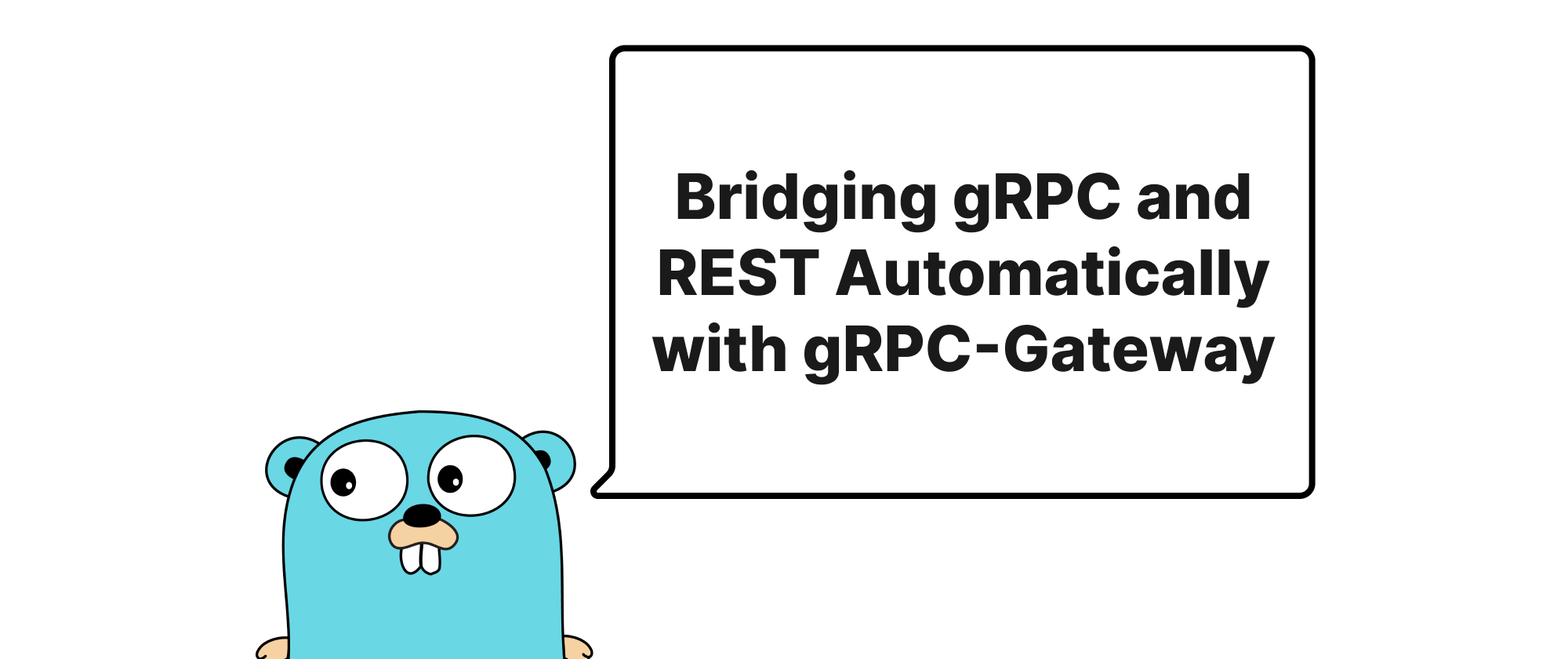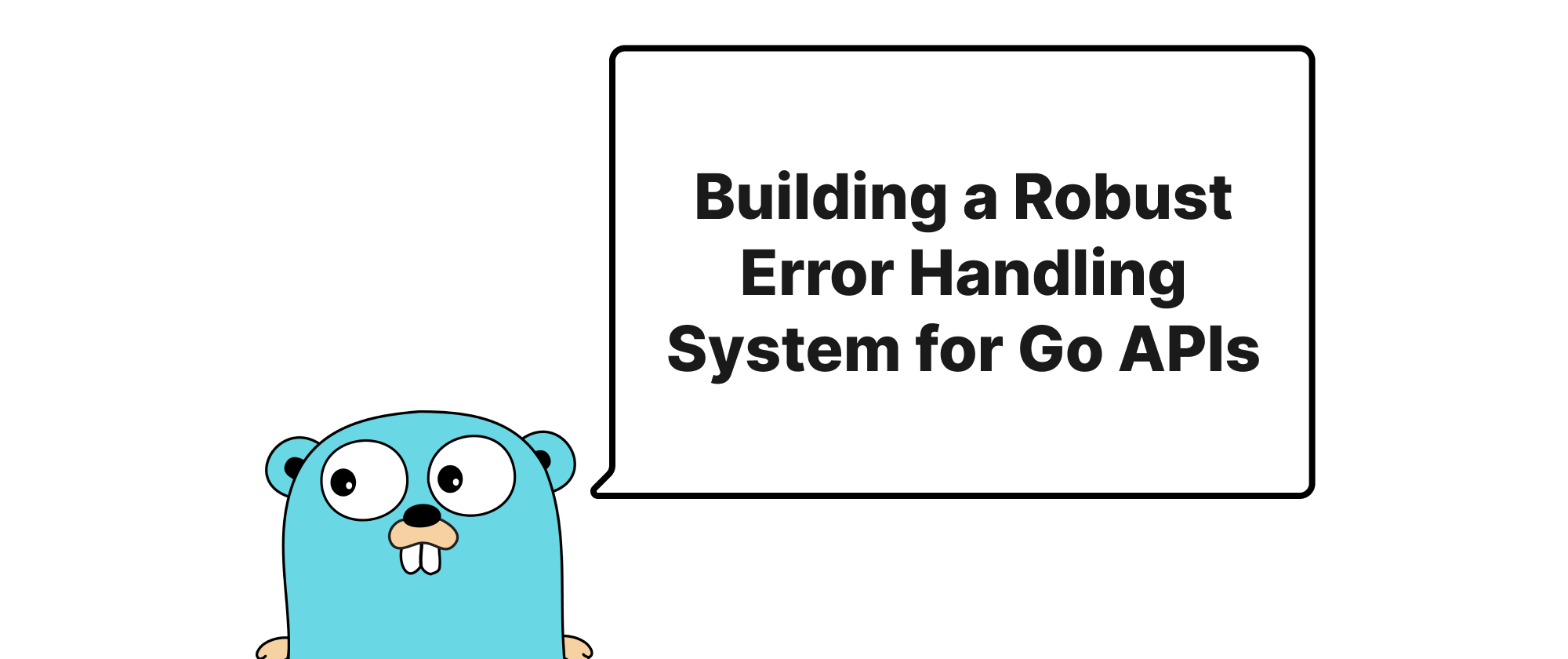Bridging gRPC and REST Automatically with gRPC-Gateway
Ethan Miller
Product Engineer · Leapcell

Introduction
In modern microservices architectures, the choice between gRPC and REST often presents a dilemma. gRPC, with its high performance, strong typing, and efficient binary serialization (Protocol Buffers), has become the de facto standard for inter-service communication within a distributed system. However, when it comes to exposing services to external clients, such as web browsers, mobile applications, or third-party integrators, RESTful APIs remain ubiquitous due to their simplicity, widespread adoption, and excellent tool support. Manually developing and maintaining two separate APIs for the same underlying service—one gRPC and one REST—can be a significant source of complexity, redundancy, and development overhead. This is where gRPC-Gateway shines. It provides an elegant solution to automatically expose your gRPC services as idiomatic RESTful APIs, allowing you to leverage the strengths of both paradigms without the dual implementation burden. This article will delve into how gRPC-Gateway achieves this seamless integration, empowering developers to build efficient, maintainable, and highly accessible services.
Core Concepts and Implementation
Before diving into the specifics of gRPC-Gateway, let's briefly define some core concepts that underpin its operation.
gRPC: A high-performance, open-source universal RPC framework developed by Google. It uses Protocol Buffers as its Interface Definition Language (IDL) and for message serialization, and HTTP/2 for transport. This enables efficient communication with features like streaming, bidirectional streaming, and strong type checking.
Protocol Buffers (Protobuf): A language-agnostic, platform-agnostic, extensible mechanism for serializing structured data. You define your data structure once, then you can use generated source code to easily write and read your structured data to and from various data streams.
RESTful API: An architectural style for designing networked applications. It relies on a stateless, client-server communication model, using standard HTTP methods (GET, POST, PUT, DELETE) and returning resource representations, typically in JSON or XML format.
gRPC-Gateway: A reverse proxy that translates RESTful HTTP/JSON requests into gRPC requests. It reads a gRPC service definition, including special annotations (HTTP rules), and generates a reverse-proxy server that forwards incoming REST requests to the corresponding gRPC server. The key here is "automatic generation," significantly reducing manual coding.
How gRPC-Gateway Works
The magic of gRPC-Gateway lies in its ability to introspect your Protobuf service definitions and generate Go code that acts as a bridge. This process typically involves the following steps:
-
Define your gRPC service with HTTP annotations: You start by defining your service and message structures using Protocol Buffers. For methods you want to expose as RESTful endpoints, you add special
google.api.httpoptions within the Protobuf definition. These annotations specify the HTTP method (GET, POST, etc.), the URL path, and how request parameters map to Protobuf fields. -
Generate gRPC and gRPC-Gateway code: Using
protoc, the Protocol Buffer compiler, along with specific plugins (likeprotoc-gen-gofor gRPC andprotoc-gen-grpc-gatewayfor the gateway), you generate the necessary Go code. Theprotoc-gen-grpc-gatewayplugin creates a*.pb.gw.gofile for each service, containing the HTTP handler logic. -
Run your gRPC server: Your gRPC service implements the logic defined in your
.protofile and listens for gRPC requests, typically on a specific port. -
Run the gRPC-Gateway proxy: You create a separate Go application that instantiates the generated gRPC-Gateway handlers. This gateway application acts as an HTTP server, listening for incoming RESTful HTTP/JSON requests. It then translates these requests into gRPC calls and forwards them to your gRPC server. The responses from the gRPC server are then translated back into JSON and sent to the client.
Code Example
Let's illustrate this with a simple "Greeter" service.
1. greeter.proto:
syntax = "proto3"; package greeter; import "google/api/annotations.proto"; option go_package = "./greeter"; service Greeter { rpc SayHello (HelloRequest) returns (HelloResponse) { option (google.api.http) = { get: "/v1/hello/{name}" }; } rpc SayHelloPost (HelloRequest) returns (HelloResponse) { option (google.api.http) = { post: "/v1/hello_post" body: "*" }; } } message HelloRequest { string name = 1; } message HelloResponse { string message = 1; }
Notice the option (google.api.http) lines. These annotations are crucial for gRPC-Gateway.
GET: "/v1/hello/{name}"maps a GET request to/v1/hello/Johnto theSayHellomethod, extracting "John" into thenamefield ofHelloRequest.POST: "/v1/hello_post"withbody: "*"maps a POST request to/v1/hello_postwith a JSON body like{"name": "Alice"}to theSayHelloPostmethod.
2. Generate Go Code:
You'll need the protoc compiler and the protoc-gen-go and protoc-gen-grpc-gateway plugins installed.
# Install protoc-gen-go go install google.golang.org/protobuf/cmd/protoc-gen-go@latest go install google.golang.org/grpc/cmd/protoc-gen-go-grpc@latest # for gRPC service generation # Install protoc-gen-grpc-gateway go install github.com/grpc-ecosystem/grpc-gateway/v2/protoc-gen-grpc-gateway@latest go install github.com/grpc-ecosystem/grpc-gateway/v2/protoc-gen-openapiv2@latest # optional, for OpenAPI spec generation # Ensure protobuf definitions are available for annotations # You might need to clone or copy googleapis/google/api to your proto path # For example, create a 'google' folder in your proto root and put 'api' inside it. # Or use a tool like 'buf' for managing dependencies. protoc -I. \ -I/usr/local/include \ -I$(go env GOPATH)/src \ -I$(go env GOPATH)/src/github.com/grpc-ecosystem/grpc-gateway/third_party/googleapis \ --go_out=. --go_opt=paths=source_relative \ --go-grpc_out=. --go-grpc_opt=paths=source_relative \ --grpc-gateway_out=. --grpc-gateway_opt=paths=source_relative \ greeter.proto
This command will generate greeter.pb.go (Protobuf messages), greeter_grpc.pb.go (gRPC service interface and client), and greeter.pb.gw.go (gRPC-Gateway handlers).
3. Implement the gRPC Server (main.go for server):
package main import ( "context" "fmt" "log" "net" "google.golang.org/grpc" pb "your_module_path/greeter" // Replace your_module_path with your actual Go module path ) type server struct { pb.UnimplementedGreeterServer } func (s *server) SayHello(ctx context.Context, in *pb.HelloRequest) (*pb.HelloResponse, error) { log.Printf("Received: %v", in.GetName()) return &pb.HelloResponse{Message: "Hello " + in.GetName()}, nil } func (s *server) SayHelloPost(ctx context.Context, in *pb.HelloRequest) (*pb.HelloResponse, error) { log.Printf("Received via POST: %v", in.GetName()) return &pb.HelloResponse{Message: "Hello from POST, " + in.GetName()}, nil } func main() { lis, err := net.Listen("tcp", ":50051") if err != nil { log.Fatalf("failed to listen: %v", err) } s := grpc.NewServer() pb.RegisterGreeterServer(s, &server{}) log.Printf("gRPC server listening at %v", lis.Addr()) if err := s.Serve(lis); err != nil { log.Fatalf("failed to serve: %v", err) } }
4. Run the gRPC-Gateway Proxy (main.go for gateway, can be in the same or separate project):
package main import ( "context" "log" "net/http" "github.com/grpc-ecosystem/grpc-gateway/v2/runtime" "google.golang.org/grpc" "google.golang.org/grpc/credentials/insecure" pb "your_module_path/greeter" // Replace your_module_path ) func main() { ctx := context.Background() ctx, cancel := context.WithCancel(ctx) defer cancel() mux := runtime.NewServeMux() opts := []grpc.DialOption{grpc.WithTransportCredentials(insecure.NewCredentials())} // Use with grpc.WithTransportCredentials for production with TLS // Register Greeter service err := pb.RegisterGreeterHandlerFromEndpoint(ctx, mux, ":50051", opts) if err != nil { log.Fatalf("Failed to register gateway: %v", err) } log.Printf("gRPC-Gateway server listening on :8080") if err := http.ListenAndServe(":8080", mux); err != nil { log.Fatalf("Failed to serve gateway: %v", err) } }
Now, run the gRPC server and the gateway server. You can then make RESTful requests:
# GET request curl http://localhost:8080/v1/hello/World # Expected output: {"message":"Hello World"} # POST request curl -X POST -H "Content-Type: application/json" -d '{"name": "Alice"}' http://localhost:8080/v1/hello_post # Expected output: {"message":"Hello from POST, Alice"}
Application Scenarios
gRPC-Gateway is particularly beneficial in various scenarios:
- Hybrid Environments: When you need to expose internal gRPC services to external clients that prefer or require REST (e.g., frontend web applications, mobile apps, third-party APIs).
- Gradual Migration: If you are migrating an existing RESTful API to gRPC, gRPC-Gateway allows you to introduce gRPC internally while maintaining compatibility with your existing external clients.
- Simplified Client Development: For environments where native gRPC client libraries are not readily available or complex to integrate (e.g., client-side JavaScript, simple curl requests for testing).
- API Prototyping and Documentation: With
protoc-gen-openapiv2, gRPC-Gateway can also generate OpenAPI (Swagger) specifications directly from your Protobuf definitions and HTTP annotations, streamlining API documentation.
Conclusion
gRPC-Gateway offers a powerful and elegant solution to a common architectural challenge: how to reconcile the performance benefits of gRPC for internal communication with the widespread accessibility of REST for external clients. By leveraging Protocol Buffer annotations and code generation, it entirely eliminates the need for manual dual-API implementation, saving significant development effort and reducing the potential for inconsistencies. This approach not only enhances developer productivity but also promotes a consistent service definition across your entire system, truly empowering you to maximize the benefits of both gRPC and REST.


